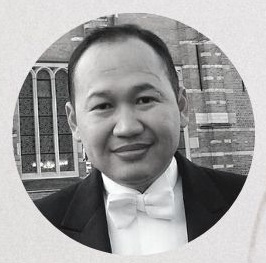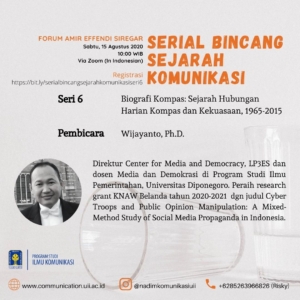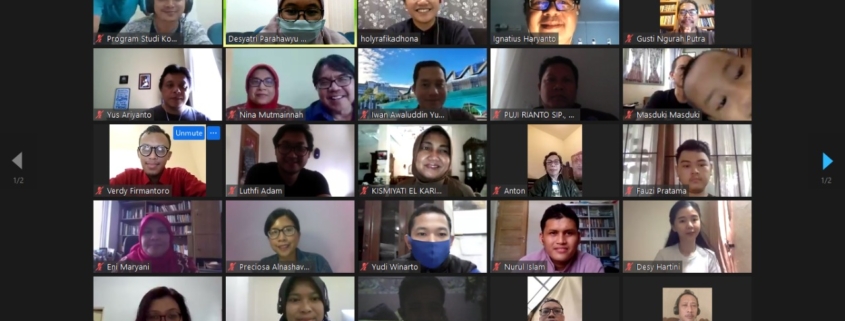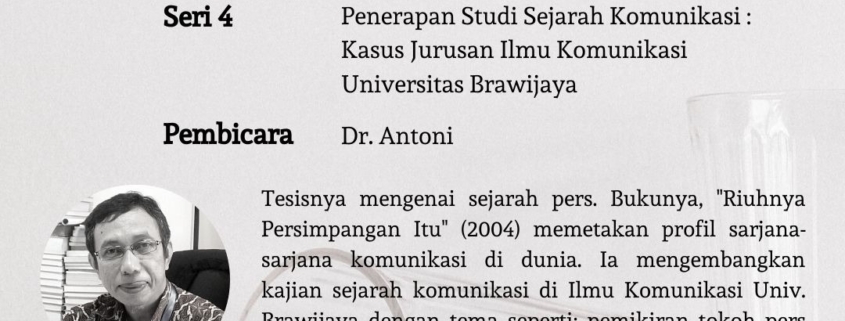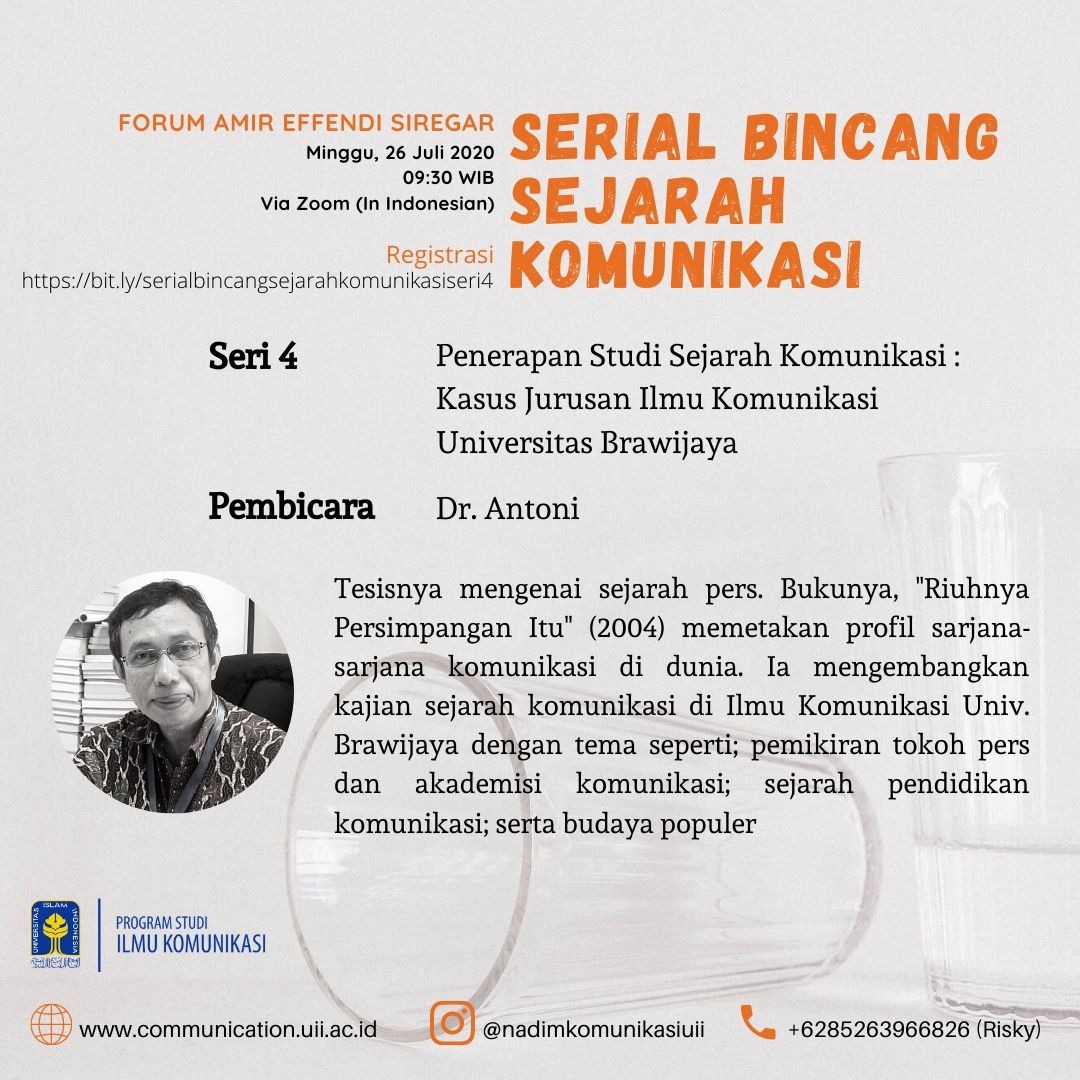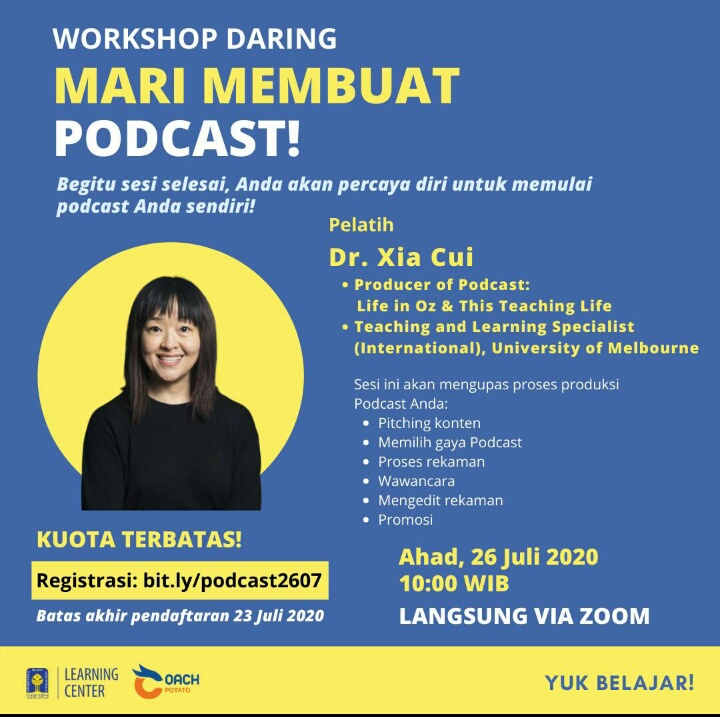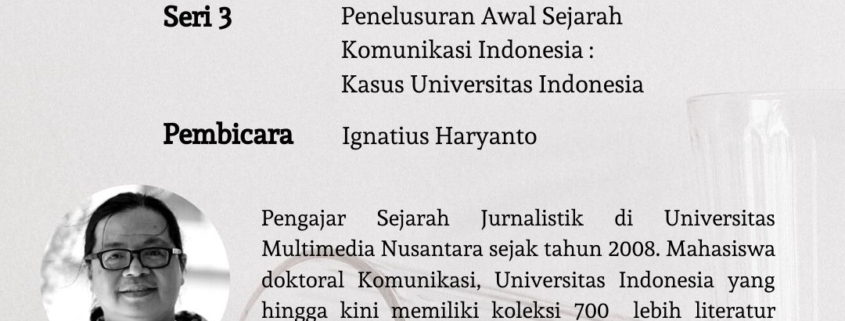Previous Writing Amir Effendi Siregar Forum # 2: Soeharto’s Regime Influences Indonesian Communication Science Curriculum and Research (2) Soeharto’s Regime Development of communication science
Alwi then began to become part of the authority of publicist knowledge and began to participate in discourse to change ‘publicist science’ to ‘communication science’. “The results of his studies in America, of course there is friction, influence, and all kinds,” he said.
Tito, who also completed his masters in the UGM Culture and Media Studies Department, said that his research based on empirical experience might become multi methodological. “From my empirical observations yesterday, this might have to be a survey for communication scholar who have experienced teaching and lectures in 1980-1990,” he explained to strengthen the argument.
There is something unique, if not exactly strange, according to Tito. Tito’s tracking, if indeed the paradigm of communication science shifted from continental Europe to the Anglo-Saxon, then the study books by Laswell, Lazarfeld, Hovland, and American scientists were truly studied in detail, intensive, and seriously.
“If I look at it from the curriculum and reading books and others, the 1980-1990 period is not a lot of books that become a reference. Usually we, the communication scholars, will learn the science of communication from translation books, summary books, introductory books whose contents do quote Lazarfeld “It could also quote Laswell, Hovland, and so on. But none of the original references,” said Tito in surprise.
This is what later became a note of Professor Alwi Dahlan’s argument in his writings in 1980. Daniel Dhakidae in 1980 also said that indeed many Indonesian social science scholars who received scholarships were sent to America. “They go to school or just visit, which ultimately makes them build imagination about how the social science discourse should actually be developed,” said Tito. Then from there the possibility of an expansion of the ‘communication science’ discourse.
After the 1965 incident, Suharto rose to power. The Ministry of Information in turn became a weapon to strengthen its government. “In his language Hill, as a warhead for banning press,” said Tito referring to Australian academics, David T. Hill, who has long been researching the press and media in Indonesia.
Tito’s presentation explained that the Information Department was based on Sukiman’s research notes, which examined the history of information science in Indonesia, “he said that the information department was mainly absorbed by graduates of communication science. Mass media employees or journalists were also drawn from communication science graduates,” Tito said reading the screen his presentation.
Tito’s tracking explained, in the 1970s, communication science graduates at the Faculty of Social and Political Sciences in Indonesia were at that time prepared to become employees in the Ministry of Information. “Of course not all of it, but the focus of learning the skills honed by his scientific teaching departs from there, meeting the needs of the information department.”
Then where are the rest who don’t work at the Ministry of Information?
Not Only State Servants, Journalists Are Also Influenced By Information Science
Tito revealed, those who did not enter the Information Department, usually entered into journalists or journalists. Interestingly, continued Tito, the values that were instilled in teaching communication majors were also embedded in these journalists. Tito found that the curriculum majoring in Communication Studies was also adjusted to the Department of Information. Tito’s emphasis was that the values of this ‘information science’ also ultimately influenced the knowledge of journalists in the 1970s. “Especially those from lighting science,” said Tito.
“Imagine the Information Department taking part in influencing the information science curriculum, whereas at that time the Information Department was trying to control, especially after the 1974 Malari incident,” Tito explained.
In mid 1974, the Government and the Ministry of Information wanted to discipline the mass media and students. But at that time the department also had control over the information science curriculum on campuses in which journalists would also be candidates. They eventually became part of the journalism discourse at the time. “The information department made communication science an epistemic authority to control journalism even at the time there was the term development communication. There was even development journalism at the time,” Tito said, explaining the development and developmentism communication discourse trends that were rampant and intensified by the Suharto government in the 1970s .
“This is interesting because in 1974 it was a moment when the science of publicism tried to be shifted into the science of communication,” Tito added. At that time, he said, Dean of the Faculty of Publications Astrid Susanto, who eventually moved to UI, offered to replace the publicist’s image as a communication science.” He said at one of the workshops in Bandung. The 1974 moment was an important milestone, because, according to Tito, the date refers to the end of the five-year plan of the Republic of Indonesia (Pelita 1) approximately 1969-1974. During that time, Prof. Astrid who served as Head of the Information, Science Bureau , and Culture of BAPPENAS, offering scholarly scholarly publicities to transform publicist science into communication science.
“This makes a big question mark. My initial argument, if we look at the plot, the transition from publicist science to communication science is part of the development of the new order. So it is not about the epistemic shock of American communication science, not that,” said Tito.
According to TIto’s initial findings, what happened was not a shift in the German publicist school to America. He alleged that there was momentum when Prof. Astrid introduces what is called development communication. “For sociology, there is development sociology. For anthropology, there is development anthropology,” Tito explained.
Tito’s search found several books by Prof. Astrid, who in every book, always found inserts or sub-chapters on development communication. and of course if your friends read his book Prof. Astrid, the definition of development here is community service. Devotion to the new order and everything related to it, “said Tito.
In addition, Tito also emphasized that, “the shift in publicistism to communication science is part of the govermentality undertaken by the state authorities to bring this publicist social science discourse closer to being a tool of state governmentality,” Tito said.

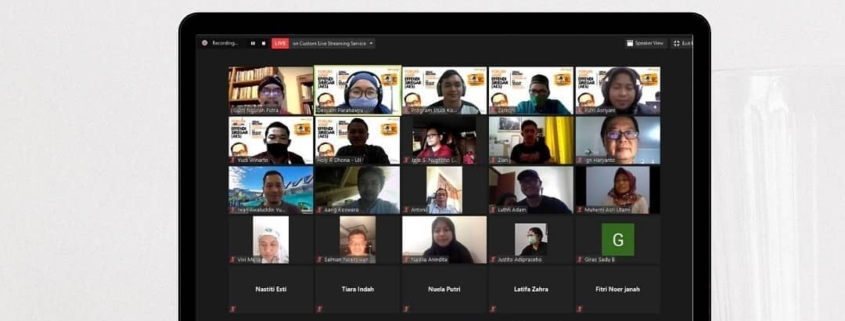
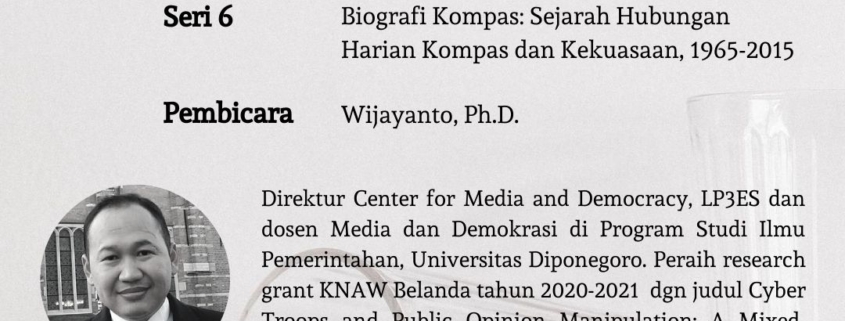 communication.uii.ac.id
communication.uii.ac.id